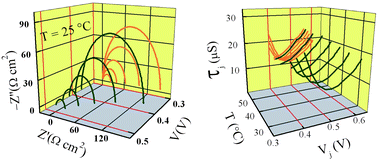Quantitative characterization of silicon solar cells in the electro-analytical approach: Combined measurements of temperature and voltage dependent electrical parameters†
Abstract
Electrochemical and photo-electrochemical systems, often involving solid-liquid interfaces, have traditionally dominated the field of material/device characterization using electro-analytical tools such as

- This article is part of the themed collection: Future Electroanalytical Developments

 Please wait while we load your content...
Please wait while we load your content...